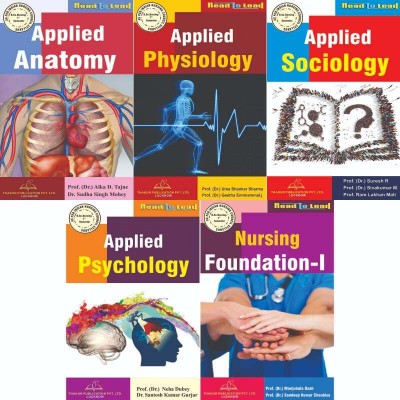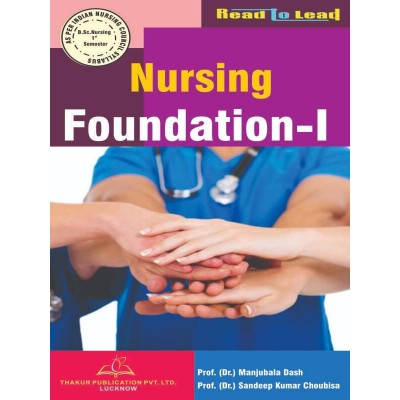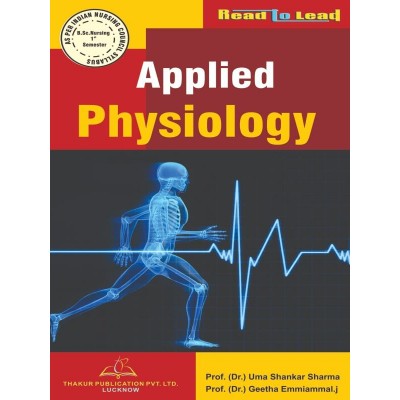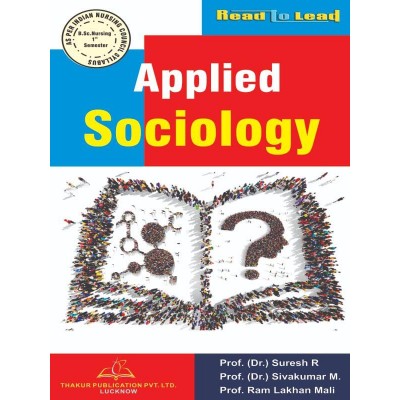Categories
- Pharmacy
- Nursing
-
MBA
-
BBA
- U.P. State University
- Veer Bahadur Singh Purvanchal University, Jaunpur
- Chaudhary Charan Singh University, Meerut
- Dr. Bhimrao Ambedkar University, Agra
- Chhatrapati Shahu Ji Maharaj University, Kanpur
- Mahatma Jyotiba Phule Rohilkhand University, Bareilly
- Mahatma Gandhi Kashi Vidyapith, Varanasi
- Dr. Ram Manohar Lohia Avadh University, Ayodhya
- Deen Dayal Upadhyaya Gorakhpur University
- Prof. Rajendra Singh (Rajju Bhaiya) University, Prayagraj
- BCA
-
B Ed
- Lucknow University B.Ed Books
- Chaudhary Charan Singh University/Maa Shakambhari University, Saharanpur
- Dr Bhim Rao Ambedkar University, Agra
- Mahatma Gandhi Kashi Vidyapeeth, Varanasi
- Chhatrapati Shahu Ji Maharaj University
- Prof. Rajendra Singh (Rajju Bhaiya) University, Prayagraj (PRSU)
- Mahatma Jyotiba Phule Rohilkhand University(Mjpru), Bareilly
- Dr. Ram Manohar Lohia Avadh University, Ayodhya
- Bundelkhand University, Jhansi
- Deen Dayal Upadhyaya Gorakhpur University
- Veer Bahadur Purvanchal University (VBPU)
- Maharaja Suhel Dev State University ,Azamgarh (MSDSU)
- Raja Mahendra Pratap Singh State University, Aligarh (RMPSSU)
- Barkatullah Vishwavidyalaya (Bhopal)
- Jiwaji University (Gwalior)
- Vikram University (Ujjain)
- Dr. Harisingh Gour University (Sagar)
- Devi Ahilya Vishwavidyalaya (Indore)
- Rani Durgavati Vishwavidyalaya (Jabalpur)
- Awadhesh Pratap Singh University (Rewa)
- Maharaja Chhatrasal Bundelkhand University (Chhatarpur)
- D. EL. ED
- TET
-
B Com
-
B Sc
- B.Sc. U.P. State Universities Common Syllabus NEP
- Veer Bahadur Singh Purvanchal University, Jaunpur
- University of Lucknow
- Chaudhary Charan Singh University, Meerut
- Madhya Pradesh
- Chhatrapati Shahu Ji Maharaj University, Kanpur
- Dr. Bhimrao Ambedkar University, Agra
- Mahatma Gandhi Kashi Vidyapith, Varanasi
- DEEN DAYAL UPADHYAYA GORAKHPUR UNIVERSITY
- Prof. Rajendra Singh (Rajju Bhaiya) University, Prayagraj
- Dr. Ram Manohar Lohia Avadh University, Ayodhya
- Mahatma Jyotiba Phule Rohilkhand University, Bareilly
- Uttarakhand State Universities
- B.Sc. Bihar Universities Common Syllabus NEP
- University of Rajasthan (Jaipur)
- Haryana
-
B A
- B.A. Of U.P. State Universities Common Syllabus NEP
- Veer Bahadur Singh Purvanchal University, Jaunpur
- University of Lucknow
- Chaudhary Charan Singh University, Meerut
- Chhatrapati Shahu Ji Maharaj University, Kanpur
- Dr. Bhimrao Ambedkar University, Agra
- Mahatma Gandhi Kashi Vidyapith, Varanasi
- Deen Dayal Upadhyaya Gorakhpur University
- Prof. Rajendra Singh (Rajju Bhaiya) University, Prayagraj
- Dr. Ram Manohar Lohia Avadh University, Ayodhya
- Mahatma Jyotiba Phule Rohilkhand University, Bareilly
- Madhya Pradesh
- Uttarakhand
- Bihar
- University of Rajasthan (Jaipur Syllabus as Per NEP2020)
- Haryana NEP-2020
- B Tech
Applied Anatomy
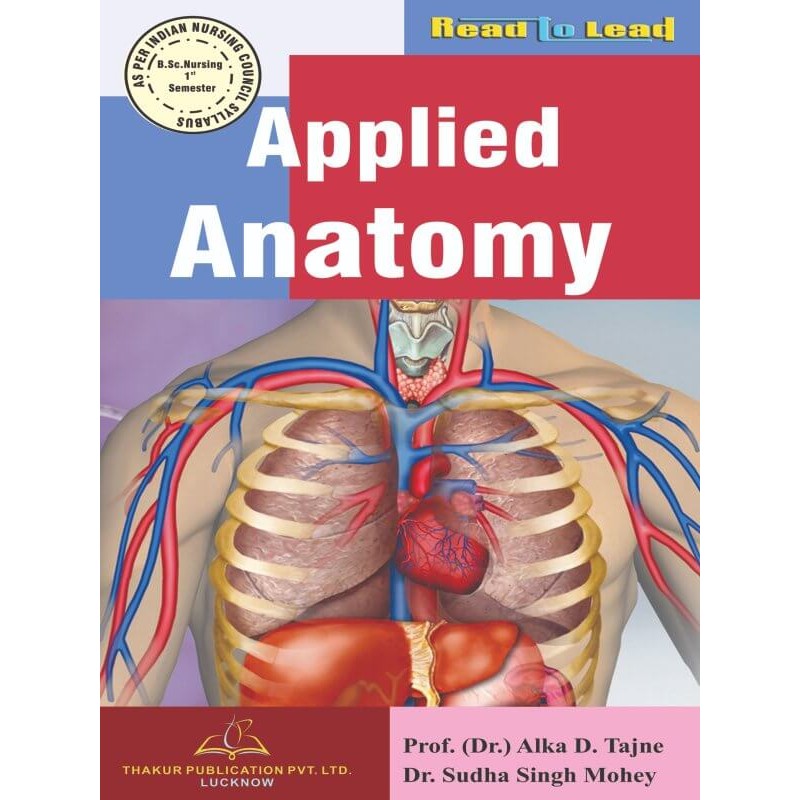
Click here to Buy E-Book Edition:
We are providing the textbook of Applied Anatomy for b.sc nursing 1st semester students as per INC Thakur Publication. This Book of BSc nursing 1st year covered all syllabus.
The 'Applied Anatomy' book by Thakur Publication is a valuable resource for B.Sc Nursing students in their first semester, aligning with the guidelines set by the Indian Nursing Council (INC). Written in English, this concise textbook explores the practical applications of anatomical knowledge in the field of nursing.
AS PER INC SYLLABUS – PRACTICAL & STUDENT-FRIENDLY CONTENT
With its comprehensive yet accessible content, this book equips nursing students with a solid understanding of applied anatomy, facilitating their clinical practice and decision-making.
ISBN- 978-93-90460-12-0/Authors: Prof. (Dr.) Alka D. Tajane, Dr. Sudha Singh Mohey
₹190.00
Tax excluded
Click here to Buy E-Book Edition:
We are providing the textbook of Applied Anatomy for b.sc nursing 1st semester students as per INC Thakur Publication. This Book of BSc nursing 1st year covered all syllabus.
The 'Applied Anatomy' book by Thakur Publication is a valuable resource for B.Sc Nursing students in their first semester, aligning with the guidelines set by the Indian Nursing Council (INC). Written in English, this concise textbook explores the practical applications of anatomical knowledge in the field of nursing.
AS PER INC SYLLABUS – PRACTICAL & STUDENT-FRIENDLY CONTENT
With its comprehensive yet accessible content, this book equips nursing students with a solid understanding of applied anatomy, facilitating their clinical practice and decision-making.
ISBN- 978-93-90460-12-0/Authors: Prof. (Dr.) Alka D. Tajane, Dr. Sudha Singh Mohey
Syllabus
Applied Anatomy
|
Unit |
Learning Outcomes |
Content |
Time (Hrs) |
|
I |
|
Introduction to Anatomical Terms and Organization of the Human Body |
8 (T) |
|
|
Define the terms relative to the anatomical position
Define the terms relative to the anatomical position
Define and describe the terms used to describe movements
Organization of human body and structure of cell, tissues membranes and glands
Describe the types of cartilage
Compare and contrast the features of skeletal, smooth and cardiac muscle |
· Introduction to anatomical terms relative to position – anterior, ventral, posterior dorsal, superior, inferior, median, lateral, proximal, distal, superficial, deep, prone, supine, palmar and plantar · Anatomical planes (axial/ transverse/ horizontal, sagittal/vertical plane and coronal/frontal/oblique plane) · Movements (flexion, extension, abduction, adduction, medial rotation, lateral rotation, inversion, eversion, supination, pronation, plantar flexion, dorsal flexion and circumduction · Cell structure, Cell division · Tissue – definition, types, characteristics, classification, location · Membrane, glands – classification and structure · Identify major surface and bony landmarks in each body region, Organization of human body · Hyaline, fibro cartilage, elastic cartilage · Features of skeletal, smooth and cardiac muscle · Application and implication in nursing |
|
|
II |
Describe the structure of respiratory system
Identify the muscles of respiration and examine their contribution to the mechanism of breathing |
The Respiratory System · Structure of the organs of respiration · Muscles of respiration · Application and implication in nursing |
6 (T) |
|
III |
Describe the structure of digestive system |
The Digestive System · Structure of alimentary canal and accessory organs of digestion · Application and implications in nursing |
6 (T) |
|
IV |
Describe the structure of circulatory and lymphatic system. |
The Circulatory and Lymphatic System · Structure of blood components, blood vessels – Arterial and Venous system · Position of heart relative to the associated structures · Chambers of heart, layers of heart · Heart valves, coronary arteries · Nerve and blood supply to heart · Lymphatic tissue · Veins used for IV injections · Application and implication in nursing |
6 (T) |
|
V |
Identify the major endocrine glands and describe the structure of endocrine Glands |
The Endocrine System · Structure of Hypothalamus, Pineal Gland, Pituitary gland, Thyroid, Parathyroid, Thymus, Pancreas and Adrenal glands |
4 (T) |
|
VI |
Describe the structure of various sensory organs |
The Sensory Organs · Structure of skin, eye, ear, nose and tongue · Application and implications in nursing |
4 (T) |
|
VII |
Describe anatomical position and structure of bones and joints
Identify major bones that make up the axial and appendicular skeleton
Classify the joints
Identify the application and implications in nursing
Describe the structure of muscle
Apply the knowledge in performing nursing procedures/skills |
The Musculoskeletal System The Skeletal System · Anatomical positions · Bones – types, structure, growth and ossification · Axial and appendicular skeleton · Joints – classification, major joints and structure · Application and implications in nursing
The Muscular System · Types and structure of muscles · Muscle groups – muscles of the head, neck, thorax, abdomen, pelvis, upper limb and lower limbs · Principal muscles – deltoid, biceps, triceps, respiratory, abdominal, pelvic floor, pelvic floor muscles, gluteal muscles and vastus lateralis · Major muscles involved in nursing procedures |
10(T) |
|
VIII |
Describe the structure of renal system |
The Renal System · Structure of kidney, ureters, bladder, urethra · Application and implication in nursing |
5 (T) |
|
IX |
Describe the structure of reproductive system |
The Reproductive System · Structure of male reproductive organs · Structure of female reproductive organs · Structure of breast |
5 (T) |
|
X |
Describe the structure of nervous system including the distribution of the nerves, nerve plexuses
Describe the ventricular system |
The Nervous System · Review Structure of neurons · CNS, ANS and PNS (Central, autonomic and peripheral) · Structure of brain, spinal cord, cranial nerves, spinal nerves, peripheral nerves, functional areas of cerebral cortex · Ventricular system – formation, circulation, and drainage · Application and implication in nursing |
6 (T) |
INC2021/B.SC Nursing/1/01
48 Items
New product


